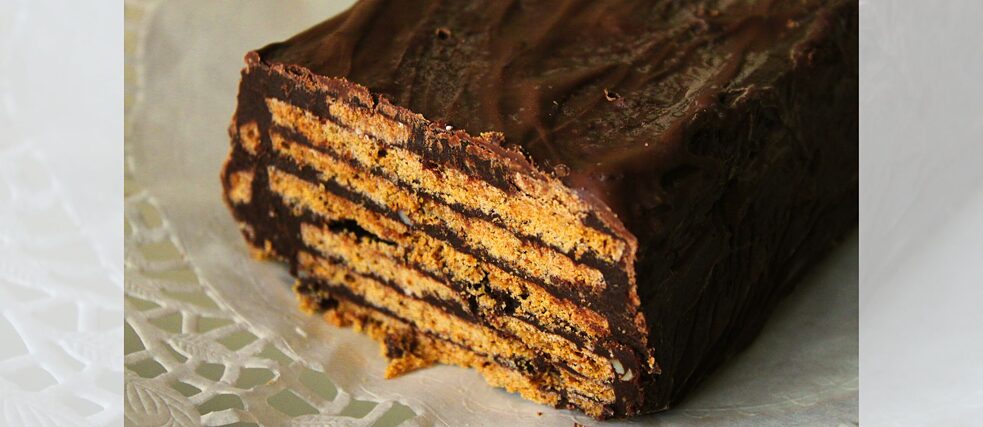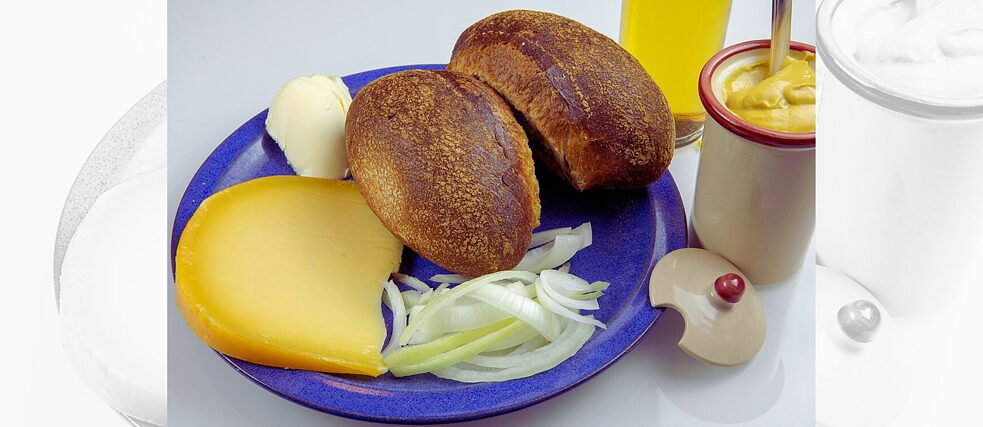Dishes Named After Animals
Ten Animal-ish Delicacies from Germany

© Getty Images
In German, phonies or deceitful people are often called falscher Fuffziger (fake fifties, because 50 pfennig coins were once easy to forge). But have you ever wondered what a "falscher Hase" might be? A rabbit in disguise, perhaps? And how does "Bärendreck," meaning "bear dirt," relate to snacks? Here’s the ultimate list of German dishes that bear animal names.
By Hendrik Werner
1. Kalter Hund
No worries! No puppies have to suffer the cold for a Kalter Hund or the cold dog. This strange name was given to a no-bake cake with alternating layers of butter cookies and chocolate. You simply melt chocolate in butter or coconut oil then pour it over a few layers of cookies at a time.
Where the name comes from
The connection to dogs in the expression was likely a mix-up. The cake is prepared in a rectangular cake pan, reminiscent of a mining car or tram, called a Hunt in German, used by miners to transport minerals. Depending on the region, Kalter Hund is also called Schwarzer Peter, Kalte Schnauze, Wandsbecker Speck or Schichtschoki.
2. Katzenzunge
We’re here for cat lovers too! Have some Katzenzungen (literally cat longue) after the Kalter Hund. Similar to cat tongues, these are elongated cookies that are a bit thicker at the front than at the back. The thicker end results from the way the dough is applied to a baking sheet with a piping bag and then gently pulled to create a cookie that’s about six to seven centimetres long.
As many varieties as breeds of cats
The main ingredients for Katzenzungen are flour, sugar, soft butter, and egg whites. Depending on the recipe, chocolate, nougat, lemon, nuts, and/or vanilla sugar are added. We’ve even seen Katzenzungen with ginger. There are no limits to the imagination.
3. Falscher Hase
Fear not, meat enthusiasts! Falscher Hase (literally false rabbit) isn't a make-believe bunny or a tofu-based meat alternative. It's a delectable meat roast crafted from a blend of minced beef and pork, forming a savoury meatloaf. Complementing the flavours are breadcrumbs, onions, and eggs, skillfully roasted or baked at their core.
Where can you find it?
In the wild, Falsche Hasen are mainly found in rustic restaurants specialising in simple German dishes. They’re usually served with potatoes and mixed vegetables – and lots of beer. Wohl bekomm’s!
4. Blindhuhn
There's a traditional saying: "Even a blind hen occasionally finds a grain of corn," implying that even the least skillful person can succeed sometimes. For instance, in the culinary world: in Westphalia, a "Blindhuhn" is a stew that's so simple to prepare that even those who aren't adept at cooking can manage it.
What’s in it?
The stew consists mainly of beans (white and green), carrots, potatoes, broth, and bacon. Fruit is also added, optionally apples or pears.
5. Bärendreck
Bear dirt? You might think so! There’s an imaginary line in Germany called the Weisswurst-Äquator: North of it, few Germans eat pale boiled sausages for breakfast. But did you know there’s also a liquorice line? South of it, many people call candies made from liquorice extract Bärendreck or “bear dirt.” North of it, they’re admired as “black gold.”
Bear of a manufacturer
The expression Bärendreck is not only based on the fact that southern Germans consume significantly less liquorice than people in the north. A manufacturer named Karl Bär first introduced liquorice products to the people in the south. His many patents earned him the somewhat disrespectful nickname starting in 1913.
6. Mettigel
A pork hedgehog - cute, isn’t he? This is what Germans believed in the early 18th century. They crafted hedgehog-shaped figures using boiled calf's liver, eggs, and breadcrumbs. Almond pieces were added to mimic spikes, and the entire creation was baked in the oven.
German technology at its best
Then it gets weird. With the introduction of refrigerators in the 1950s, it became possible to significantly simplify this recipe. From then on, festive tables on birthdays and other celebrations featured hedgehogs made of raw minced pork (Mett) studded with raw onions. The name Mettigel probably didn’t catch on for this party classic until the 2000s.
7. Zimtschnecke
Ummm a cinnamon snail! Would you like a snail with your coffee? No, not like the one in the photo. In Germany, a pastry is becoming increasingly popular that goes by the more straightforward name "kanelbulle" or "cinnamon roll" in its Swedish homeland. These kanelbullar (the swedish cinnamon rolls) are known as "Zimtschnecken" in Germany. The explanation is simple: their shape resembles that of a snail's shell.
Snails made of hair?
Germans love animal metaphors. It's not surprising that snails inspire more than just Swedish cinnamon rolls. Picture this: women dressed in traditional Bavarian dirndls. A lot of them weave pigtails and coil them into "snails," either on both sides or at the back of their heads.
8. Rollmops
Imagine a pug's flat face, a flat bottom, and a chunky bit in the middle. That's how a pug, called Mops in German, looks. So, what if we called a roundish snack a "Rollmops"? In Germany, they use this name for a rolled herring dish. Eh, herring? It's a small, silverfish. First, they clean the fish and remove the bones. Then they pickle it in vinegar and salt. They use the herring to wrap cucumbers, onions, and spices. And to hold it all together, they use a wooden stick.
From the sea to the pub
Vinegar and salt preserve herring. That’s why, before the invention of refrigeration, people who didn’t live on the coasts were able to enjoy it. In Berlin, for example. And it was precisely there, in the pubs of the German capital, that the Rollmops is said to have been invented.
9. Bienenstich
The bee's sting might hurt, but if it's Bienenstich, it's a sweet treat. Among the most German cakes, there's Bienenstich. You can spot it in nearly every bakery. Bienenstich features yeast dough topped with butter, sugar, and almonds that turn caramelized during baking. You might even come across versions filled with cream.
Bittersweet lawsuit
A baker and his employee who went to court in 1984 because of a Bienenstich probably had more than just a sting. The woman had nibbled a piece of cake without permission and was summarily dismissed. The case went down in legal history as the bee sting case!
10. Halver Hahn
In Germany, when most people say "halber Hahn," they're referring to half a grilled chicken they grab during their lunch break. Another smaller group employs the same phrase to describe a tall, thin man. However, if you find yourself in the Cologne region, don't be surprised if the term brings to mind cheese on a roll! In this Rhine metropolis, a "halver Hahn" is actually half of a rye roll topped with Gouda cheese and a tangy gherkin. Sounds underwhelming, right? This quirky variation likely originated as a playful jest by an innkeeper.
Why V replaces B
Regardless of the origin of the name, you may wonder: why the “v”? In Cologne and the surrounding area, people speak a dialect of Low German. Low German differs from High German, among other things, in that certain consonants sound like they did in the early Middle Ages. The Rhinelanders are thus among those people who missed out on the so-called Second Sound Shift. They stuck with the “v,” where Bavarians and Thuringians, for example, use a “b.”









